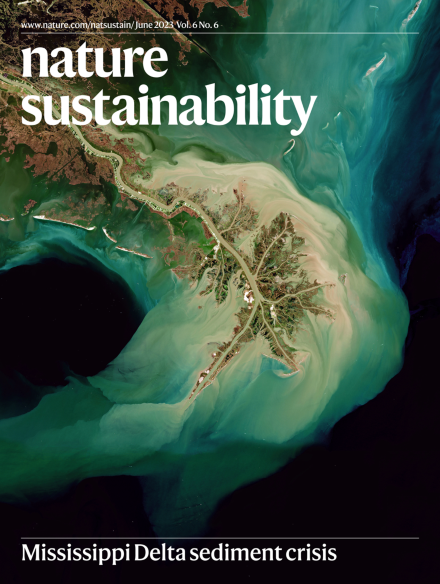全球农作物商品对环境的多维影响
IF 27.1
1区 环境科学与生态学
Q1 ENVIRONMENTAL SCIENCES
引用次数: 0
摘要
农业是造成有害环境影响的主要原因之一,包括温室气体排放、生物多样性丧失和淡水资源枯竭。这些影响可以用环境可持续性指数来评估;然而,由于目前指标的局限性,有必要制定更有力和标准化的特定作物环境可持续性指数。在这里,我们开发了作物环境可持续性指数(PLANTdex),这是一个空间明确的指数(5 arcmin分辨率),用于量化作物生产的环境影响。PLANTdex包括全球标准化的环境影响指标,通过五大排放途径评估水资源压力和生物多样性损失:温室气体排放、水消耗、土地占用和氮磷肥施用。我们将PLANTdex应用于16种作物,揭示了生产系统效率、作物类型和当地环境敏感性之间的高度可变性。在全球和全国范围内,PLANTdex得分与作物产量之间没有明显的相关性,但在更精细的空间尺度和单个作物上,相关性更强。甘蔗表现出最强的负相关(高产区影响小),而油棕表现出最强的正相关(高产区影响大),突出了次国家级、特定作物评估的重要性。PLANTdex的空间分辨率和作物特异性使其对自然相关财务披露和企业可持续发展战略特别工作组等倡议具有价值。由于目前作物生产的环境可持续性指标的局限性,农业的环境影响可能难以评估。本研究开发了一个强大的特定作物环境可持续性指数,有助于评估企业的可持续性战略和政策。本文章由计算机程序翻译,如有差异,请以英文原文为准。

The multi-dimensional environmental impact of global crop commodities
Agriculture is one of the leading causes of detrimental environmental impacts, including greenhouse gas emissions, biodiversity loss and depletion of freshwater resources. Such impacts can be assessed by environmental sustainability indices; however, limitations in current indicators necessitate the development of more robust and standardized crop-specific environmental sustainability indices. Here we developed the crop environmental sustainability index (PLANTdex), a spatially explicit index (5 arcmin resolution) quantifying crop production’s environmental impacts. PLANTdex includes globally standardized indicators of environmental impacts assessing water stress and biodiversity loss via five emissions pathways: greenhouse gas emissions, water consumption, land occupation, and nitrogen and phosphorus fertilizer application. We applied PLANTdex to 16 crops, revealing high variability across production system efficiencies, crop types and local context environmental sensitivities. Globally and nationally, no clear correlation emerged between PLANTdex scores and crop production, but stronger correlations were evident at finer spatial scales and for individual crops. Sugar cane showed the strongest negative correlation (low impacts in high-production areas), while oil palm had the strongest positive correlation (high impacts in high-production areas), highlighting the importance of sub-national, crop-specific assessments. PLANTdex’s spatial resolution and crop specificity make it valuable for initiatives such as the Taskforce on Nature-related Financial Disclosures and corporate sustainability strategies. Environmental impacts of agriculture can be difficult to assess due to limitations in current environmental sustainability indicators of crop production. This study develops a robust crop-specific environmental sustainability index that helps assess corporate sustainability strategies and policy.
求助全文
通过发布文献求助,成功后即可免费获取论文全文。
去求助
来源期刊

Nature Sustainability
Energy-Renewable Energy, Sustainability and the Environment
CiteScore
41.90
自引率
1.10%
发文量
159
期刊介绍:
Nature Sustainability aims to facilitate cross-disciplinary dialogues and bring together research fields that contribute to understanding how we organize our lives in a finite world and the impacts of our actions.
Nature Sustainability will not only publish fundamental research but also significant investigations into policies and solutions for ensuring human well-being now and in the future.Its ultimate goal is to address the greatest challenges of our time.
 求助内容:
求助内容: 应助结果提醒方式:
应助结果提醒方式:


